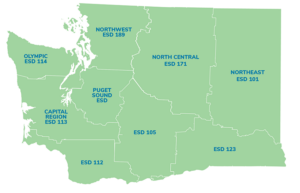The California Project WET program and our partners are eager to assist in supporting local professional development and water education outreach efforts. Project WET is at home in the classroom as well as the afterschool program, college methods course or in water education outreach programs whether in the physical or digital realm. Project WET activities are designed to easily integrate knowledge of local water resources and water issues including water and human impacts, natural water hazards, weather and climate, water conservation, watersheds, groundwater, water quality and water systems.
Every Project WET activity was created by teachers for teachers, and each incorporates nationally recognized education principles and practices. Our professional development trainings maximize the time engaged in hands-on activities, allowing educators to experience Project WET activities as a learner and become familiar with the teacher designed features of Project WET activities and guides. Project WET activities incorporate low-cost materials and provide step-by-step instructions making the activities very popular with California educators of all levels of teaching experience.
California Project WET also offers content-specific workshops to gain greater depth of knowledge connected to current issues and research. In partnership with the US Geological Survey California Water Science Center and California Department of Water Resources, Project WET has offered workshops highlighting the role of science in studying subjects ranging from floodplain ecology and restoration efforts in the Sacramento-San Joaquin Valley, understanding climate change and how research is being applied to protect California water supplies to the dynamics and issues around the use and management of groundwater.
California Project WET is a program of the non-profit Water Education Foundation and is funded by grants from the U.S. Geological Survey- California Water Science Center, Reclamation and the California Department of Water Resources and local water and education programs.
|
|
|
|
|
|
|
|
|
|
|
|
|
|
|
|
|
|
 Please select the district(s) your located in. Used this map for reference.
Please select the district(s) your located in. Used this map for reference.